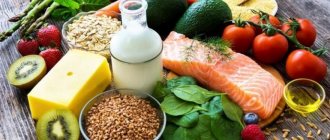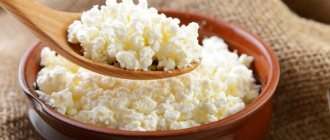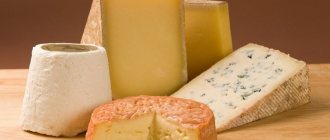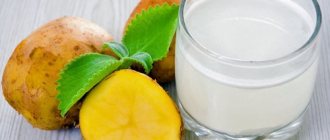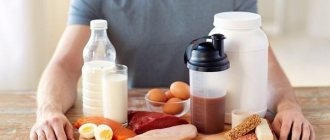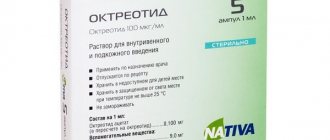Sour cream is one of the most beloved and popular products of residents of many countries, where it is present on the table in almost every home. Not every modern person can boast of excellent health, so the question is always relevant: is it permissible or not to use sour cream for diseases of the digestive system?
Despite the fact that sour cream has many beneficial properties, in case of pancreatitis it should be included in the menu with caution.
Is it possible or not to eat sour cream if you have pancreatitis?
It is prohibited to use sour cream in the acute phase of pancreatitis due to the high content of fats and calories in the product. Eating sour cream even in small quantities during exacerbation of pancreatitis can aggravate the patient’s condition, since such a product is an unreasonable burden on the pancreas. However, you need to keep in mind that sour cream is healthier than butter and cream, since it contains a small percentage of cholesterol, and protein and fats are easily digested due to fermentation.
Sour cream can be introduced into the diet of patients with pancreatitis during stable remission, when all test parameters are normal and the patient does not complain about symptoms characteristic of the disease.
Sour cream is allowed to be included in the diet, taking into account the characteristics of the patient’s condition. In case of long-term or persistent steatorrhea (loose stools and detection of undigested fats in the stool), it is not allowed to consume sour cream. Even if you feel well, steatorium indicates problems with digestion, and especially with the digestion of fats by the pancreas.
Sour cream should be introduced into the diet with caution, starting with small portions and coordinating its use with a nutritionist. You need to start consuming sour cream with one teaspoon every other day. The choice should be made with low-fat sour cream (10 - 20%). When purchasing, you need to pay attention to the expiration date and quality of the fermented milk product. It is not recommended to use sour cream containing vegetable fats, thickeners, preservatives, or stabilizers. The healthy product should contain only cream, milk and sourdough.
Currently reading: Treatment of pancreatitis with propolis - how to take it and reviews
Sour cream for pancreatitis can be used as an additive in various dishes, for example, with sour cream you can prepare pudding, casseroles, sauces for meat dishes, and you can season salads with the product.
When using sour cream in limited portions, it is possible to enrich the diet with a healthy product, adding new flavors to dietary dishes.
For chronic pancreatitis
Is it possible to use sour cream for chronic pancreatitis? The leading manifestations, when the doctor gives permission to use the product in moderation, are the absence of deterioration, the chronic stage and the course of the pathology without changes. After you are allowed to take sour cream, add it into your diet carefully, the initial portion is 1 teaspoon per day. You need to choose a low-fat product, up to 20%.
If there are minor pains and other changes in the functioning of the organ, and tests show deviations, this is considered an immediate condition for following a strict dietary table.
Particular attention should be paid to the patient's condition.
- The presence of diarrhea for a long time; there is unbroken food in the excrement.
- Diarrhea along with other symptoms, even if the general condition is excellent. These signs indicate the inability of the body and pancreas to cope with the fats present.
diarrhea
When pancreatitis is chronic, sour cream is consumed, including in various dishes.
- Soup.
- Vegetable puree.
- Cottage cheese.
Using sour cream, you can do:
- puddings;
- casseroles;
- use when preparing milk and sour cream sauce for meat dishes;
- dress salads with fruits and vegetables.
It is not recommended to eat fermented milk products every day; a break is taken.
It is better to eat in the first half of the day. Since it is oily, using it in the evening will put a lot of stress on the organ and cause discomfort, pain and fullness in the stomach.
Sour cream sauce is allowed, but due to the presence of a large amount of cholesterol, it can be combined with potatoes, meat, and fish. It is important to buy natural products. If homemade sour cream is used, then no more than 20% fat.
Diet No. 5p
What foods are allowed when diet No. 5p is prescribed:
What foods are strictly prohibited when diet No. 5p is prescribed:
What dietary recipes are suitable for patients with both acute and chronic pancreatitis?
- meat and fish broths;
- any alcohol;
- strong tea and coffee;
- no matter what kind of sausage products;
- smoked products;
- bakery products and fresh bread;
- kefir, yoghurts;
- foods that irritate the mucous system of the stomach and intestinal tract (sour and spicy);
- chocolate, pastries, cakes;
- no matter what kind of fried food is prohibited;
- fats of animal origin.
To ensure the normal functioning of the pancreas, you need to exclude foods that can provoke acid formation in the stomach and the release of a huge amount of enzymes. It is necessary to correctly observe the daily caloric intake (up to one thousand seven hundred kcal for acute pancreatitis and up to two thousand seven hundred kcal for acquired pancreatitis).
Usually, doctors strongly advise adhering to the 5p diet for 6-12 months, or even throughout life.
Dietary products should be only the freshest and of good quality. Therefore, in case of pancreatitis and cholecystitis, it is necessary to reconsider the diet and its high-quality composition.
In order to maintain proper nutrition, you need to learn how to cook dietary foods correctly and tasty; below are possible recipes for dishes for pancreatitis and cholecystitis.
Recipes for dietary dishes for patients with acute and acquired pancreatitis:
- Oatmeal. To make it, you will need three tablespoons of oatmeal, two hundred ml of water, salt and a piece of low-fat butter. Pour the flakes with water, add a little salt and bring to a boil while constantly stirring. Then turn off the heat, close the lid and leave for 5-10 minutes. When serving, add a piece of butter.
- Milk pumpkin rice porridge. This is a very tasty and healthy dish used for pancreatitis and cholecystitis. To make it, you will need half a kilogram of pumpkin, seven tablespoons of rice, two hundred grams of skim milk, a piece of butter, a pinch of salt and sugar. The peeled pumpkin is cut into small pieces and filled with water so that it completely covers the pumpkin. Add sugar and salt and cook. When the pumpkin has become soft, add rice and cook until it is ready. When the water has completely evaporated, add the milk. After it boils, turn off the heat and cover with a lid. When serving, add a piece of butter. An exception is acute pancreatitis, in which porridge is cooked only in water. Pumpkin recipes are quite ordinary; even a child will like this porridge.
Dietary soups play a leading role in the treatment of pancreatitis. Their production and composition must strictly comply with the requirements of the 5p diet.
- Puree potato soup. To make it, you will need a liter of vegetable broth, 100 grams of potatoes, one carrot, salt and onions. Potatoes, onions and carrots are chopped, everything is poured into a pan with slightly salted water. Cook for 30 minutes. Then puree the vegetables until mushy. When serving, you can add a piece of boiled chicken breast to the soup (such soups are excluded when pancreatitis is acute).
- Fish soup. This soup fits well into the 5p diet. It has a huge protein content and a minimum of fats and carbohydrates. We will need dietary types of fish, namely half a kilogram of fillet, a piece of butter, one potato, 50 grams of milk, herbs, half an onion and salt. Bring the fish fillet to a boil, add finely chopped onions and potatoes, herbs and salt. Simmer for another half hour. Finally, pour in the milk and let it boil. Vegetables and fish need to be pureed or the soup should be blended in a blender. The dish is suitable for chronic pancreatitis and cholecystitis.
- Vegetable soup. Such soups are very simple to make. To make it we will need: one potato, carrots and onions, green peas, corn, beans to taste, a piece of butter and salt. Vegetables are peeled, washed and cut into small cubes. The purchased mixture is poured into a saucepan with 2 liters of water, oil and salt are added. Bring to a boil, cover and simmer over low heat for another 20 minutes.
Making similar dishes takes very little time. Dietary soups will help you vary your diet, and a disease such as pancreatitis will no longer be associated with an acidic menu.
ul
Sour cream for cholecystopancreatitis
The pancreas and gallbladder normally secrete enzymes into the digestive system that help carry out normal digestion. The difference between these organs is that the gallbladder does not produce bile, but is a reservoir for its accumulation, and the pancreas produces pancreatic juice.
Very often, inflammation of one organ is accompanied by damage to another, and it is sometimes difficult to determine whether cholecystitis caused pancreatitis or vice versa. The combination of these two diseases is called cholecystopancreatitis, although pain in this case is localized in the pancreas.
The diet for cholecystopancreatitis does not differ from the special nutrition system intended for pancreatitis (dietary table number 5). Patients are recommended to use light foods that do not complicate the digestion process and do not contain large amounts of fat. Using sour cream in this case is also allowed after the onset of stable remission, starting with small portions, as an additive to main dietary dishes.
Why is fermented milk product dangerous?
Despite its usefulness, sour cream is a fairly fatty and high-calorie product.
Therefore, people with obesity, diseases of the liver, stomach, intestines and pancreas can use it with great caution, and in case of exacerbation of illnesses it should be completely excluded from the diet. Sour cream normalizes digestion and improves intestinal microflora. However, in case of acute diseases of the intestines and pancreas, due to the high content of fat and lactose, the product is poorly absorbed by the body and can cause:
The product contains a considerable amount of cholesterol. Therefore, the abuse of sour cream puts a great strain on the liver and gallbladder. Sour cream is strictly contraindicated for people with cholecystitis. Due to the cholesterol content, the product is also not recommended for people with hypertension or diseases of the cardiovascular system.
Fermented milk products contain a significant amount of fatty and organic acids. In view of this, sour cream is contraindicated in the presence of diseases such as:
- ulcer;
- gastritis with high acidity;
- acute pancreatitis.
Its use in such cases will lead to irritation of the mucous membranes of the digestive organs and aggravation of the disease.
Today, in order to reduce the cost of the production process, as well as extend the shelf life of the product, many manufacturers add preservatives, stabilizers to sour cream or replace animal fats with vegetable fats (most often palm oil). The result is no longer sour cream, but a vegetable-fat mixture. There is nothing useful for the body in it, and the chemical additives cause a blow to the digestive organs.
If your stomach hurts after sour cream, this most often occurs due to poor digestibility of the product due to an insufficient amount of lactase (an enzyme necessary for processing the milk carbohydrate lactose). Therefore, if you experience frequent pain after consuming this product, you should definitely examine the pancreas for its enzymatic abilities.
Rules for choosing a fermented milk product
Today, in the process of making sour cream products, substitutes for milk and animal fats are often used; stabilizers, preservatives, and emulsifiers are added to extend shelf life and give better taste. Such a product not only has no benefit, but is also very harmful to the digestive system.
When choosing sour cream, you need to pay attention to the following factors:
- Fat content (not higher than 10-20%).
- Shelf life (no more than 7-14 days).
- Ingredients (natural sour cream should contain nothing except cream, sourdough, milk).
- Color – white glossy. A matte tint indicates the addition of thickeners.
- The consistency is creamy, without lumps.
- GOST is indicated on the packaging, and the volume of lactic acid bacteria at the end of the product’s shelf life should not be less than 1*107 CFU per gram.
- The smell should not be overly sour or yeasty.
When poured, sour cream forms a mound with flowing streams. High-quality sour cream has an enveloping taste. It should not spread or stand in a lump. If the sourness is noticeably felt upon consumption, this indicates that the product has already begun to deteriorate. In general, the healthiest sour cream that is safe for the intestines and pancreas is the one that has been stored for no more than seven days.
If the packaging says “milk-containing product” or “vegetable-fat product” instead of the word “sour cream” or next to it, this is not natural sour cream, but its sublimates. It is very undesirable to use such mixtures, and in case of inflammation of the pancreas, it is strictly prohibited.
Composition and beneficial properties
Sour cream contains a large amount of easily digestible proteins and milk fats. The product contains vitamins pp, b9, d, b5, b6, a, b1, b2, bp, s, b12, e, h. The fermented milk product is rich in minerals such as molybdenum, fluorine, iron, potassium, manganese, phosphorus, zinc, calcium, selenium, sulfur, sodium and cobalt.
The beneficial properties of sour cream are due to the fat-soluble vitamins a, e d, and group of vitamins B, which are necessary for the body to recover from pathological processes.
Milk sugar or lactose in sour cream accelerates the absorption of calcium and participates in the process of stabilizing intestinal microflora. The rich mineral composition of the product helps to normalize metabolic processes and has a positive effect on the digestive tract.
Consumption of fermented milk products allows you to activate the process of assimilation of food taken, satisfies hunger, and replenishes the body with necessary substances.
Sour cream is included in the diet for pancreatitis infrequently, only when necessary and in the stage of stable remission, since the high calorie content and increased fat content of the product can become an extra burden for the inflamed pancreas.
Nutritionists recommend consuming sour cream as an additive to salads, cereals or soups, since in this form the product is quickly absorbed and does not cause a negative reaction from the digestive tract.
Currently reading: Peaches and apricots for pancreatitis - beneficial and harmful properties, recipes
Useful properties of sour cream and its calorie content
The product has a rich mineral and vitamin composition. It includes:
- water (approximately 60-80%), fats (10 to 58%), protein (4%), carbohydrates (5%), ash;
- fatty, organic acids;
- vitamins A, B, C, E, D, PP, H, K;
- potassium, magnesium, calcium, iron, iodine, copper, zinc, selenium, phosphorus, sulfur.
Please note that the product also contains cholesterol. The calorie content of 100 grams of sour cream depends on the degree of its fat content:
| Variety | Fat content | Calorie content | Relevance for pancreatitis |
| Low-fat | From 10 to 14% | 119 kcal. | Recommended for remission and CP |
| Low fat content | From 15 to 19% | 160 kcal. | |
| Classical | 20-34% | 203-285 kcal. | Prohibited for use |
| Fat | 34-48% | 290-330 kcal. | |
| Very fat | 50-58% | 370-410 kcal. |
Sour cream has a wide range of beneficial properties:
- Replenishes energy reserves.
- Increases appetite.
- Normalizes metabolism and digestion.
- Improves intestinal microflora.
- Inhibits the proliferation of pathogenic bacteria, prevents the development of putrefactive processes in the digestive organs.
- Strengthens bone tissue.
- Helps normalize hormonal levels.
- Activates mental performance, improves memory.
- Invigorates.
- Helps improve mood.
- Takes part in the formation of hemoglobin.
- Nourishes, moisturizes the skin, creates a protective layer, so it is used for sunburn to reduce pain and the negative effects of ultraviolet rays
- Improves complexion, helps narrow pores.
- Strengthens hair and improves its appearance.
Natural sour cream is useful, the shelf life of which does not exceed fourteen days. Products with a long shelf life contain stabilizers and preservatives that are harmful to health.
Dishes in a steamer and multicooker
The multicooker and steamer are made in such a way that the technological process of making food is perfectly suitable for creating dishes that can be eaten with pancreatitis and cholecystitis. The 5p diet allows you to prepare a huge number of dishes using these devices.
A list of dietary soups corresponding to diet for pancreatitis No. 5 p is given below.
- Beef cutlets. Perfect for when the 5p diet is prescribed for acquired pancreatitis. 100 50 grams of lean beef, a piece of stale bread, a little water and salt will come in handy. Soak the bread in water and grind together with the meat and salt in a meat grinder. We make cutlets of the required size and place them in a double boiler. Cook for 20-40 minutes. It is recommended to boil the meat in advance. When serving, pour over melted butter. Such cutlets should not be consumed in the first week in case of acute pancreatitis.
- Steam omelette. We will need chicken eggs (1-2 pieces), a piece of butter and milk. The whites are separated from the yolks (yolks are allowed for acquired pancreatitis and cholecystitis, half a day). Add milk to the whites, salt, beat and place in a container for steaming in a multicooker. You can add a little herbs and grated low-fat cheese. Cook for fifteen minutes. The dish is served warm.
Liquid food is useful for this disease, as it saturates, but does not burden the digestive system. But the diet should completely exclude the following first:
The question of what diet to follow for pancreatitis today is relevant for many. And this is really important, since in case of acute or chronic disease of the pancreas, you can eat only a limited list of dishes. What delicious recipes are relevant for patients with pancreatitis?
- Tomato sauce. You need to peel the fruits, chop them and cook over low heat with the addition of water. Proportions depend on taste preferences. The sauce can be made either thick or watery. Lightly add salt to the resulting mass, add greens and a teaspoon of olive oil. Bring to a boil and cool.
- Berry sauce. Non-acidic, ripe berries are selected (any at your discretion). They need to be washed and boiled over high heat, you can add a little sugar. Then the berries are stewed for about 40 minutes over low heat. The sauce is served pureed.
ul
Healthy and tasty recipes with fermented milk products
Patients with pancreatitis should not consume sour cream in its pure form. It is added only to add flavor to dietary dishes.
Summer vegetable salad
In the summer, in the midst of an abundance of vegetables and fruits, you want to make the most of all natural vitamins. Making a salad from these ingredients is not difficult. For the salad you will need fresh cucumbers, boiled eggs, lettuce, parsley, onions and dill. Cut the cucumbers into small rings and mix with chopped eggs. Add chopped herbs. Season the finished dish with sour cream 15% fat.
Cabbage soup with cabbage
White cabbage, cut into squares, is added to the secondary broth resulting from cooking the meat. After half an hour, add chopped vegetables (potatoes, carrots) and onions and cook until fully cooked.
When serving, the dish is decorated with herbs, sour cream and pieces of boiled meat.
Correct use of this product will allow you to diversify your usual diet, adding refinement to the taste of daily prepared dishes, without overloading the pancreas and without fear of the possibility of a relapse.
You can compensate for the lack of calcium using dishes made from other fermented milk products.
Curd pudding
To prepare, you need to separate the whites from two eggs. Add 2 tsp to the whites. semolina, sugar and 200 g of cottage cheese. Mix thoroughly. The mixture is placed in a baking dish and sent to the oven.
Apple pie with kefir
Several apples are peeled and cut into small slices. For the charlotte base, beat 250 ml of kefir with two eggs. Add one glass of semolina and flour to the mixture. Mix everything until a homogeneous mass is obtained.
Place apples on the oiled bottom of the frying pan and pour the resulting dough on top. Bake in the oven for 40 minutes.
How to choose the right product
When choosing sour cream, you need to pay attention to the expiration date and composition. You should use products made from natural ingredients, cream, and fermented milk starter. It is unacceptable to consume sour cream containing vegetable fat, preservatives, starch, or stabilizers. The quality of sour cream is determined by GOST 52092 -2003. The presence of the BIO prefix on sour cream indicates a composition enriched with bifidobacteria and pribiotics. If the product contains live microorganisms, the package contains the prefix "coe".
Natural sour cream is suitable for use within 14 days from the date of production, and after opening the package - 72 hours. If a product indicates a shelf life of about 30 days or more, it means the product was produced at high temperatures. This heat treatment allows you to store the fermented milk product longer, but destroys lactic acid bacteria. Fermented milk product processed using high temperatures is not healthy and lacks nutrients and microorganisms necessary for the body.
Features of consuming sour cream for pancreatitis
For pancreatitis, it is allowed to use sour cream with a low fat content, without artificial additives, and always fresh.
The product can be introduced into the diet only when the digestive process has stabilized, in limited quantities, and in no case as an independent product. After therapeutic fasting and a strict diet, sour cream helps replenish the body with useful substances and gives the patient tone. However, you should not get carried away with the product; even during periods of stable remission, you should use it in small portions, best as a sauce for salads, or as an additive to soups and cereals. Sour cream for pancreatitis is used in baked goods.
A fermented milk product should not be used if the patient has loose stools, stomach problems, or deterioration in health after consumption. You can replace sour cream with kefir, yogurt, and yogurt.
Nutrition for pancreatitis:
1. Diet for pancreatitis - Read 100% The article gives the features of the diet for pancreatitis - Diet No. 5p, diet No. 5p 1st option, diet No. 5p 2nd option. Goals and indications for the use of the diet. The principles of dietary nutrition for pancreatitis are described.
The necessary components of optimal healing nutrition for pancreatitis are proteins, fats, carbohydrates, vitamins and minerals. A missing amount of any of the components leads to health problems. Does Diet No. 5p meet the requirements of optimal nutrition?
4. Sample menu for acquired pancreatitis - read one hundred percent
- hot sauces;
- Excluded - all egg dishes, not counting those allowed
- Allowed: steamed white omelette (egg yolks are not used)
- Allowed: steam omelette with meat
Recipes for dietary meat salads consisting of boiled meat and vegetables are also relevant for patients with chronic pancreatitis. If desired, you can supplement them with crackers and season with a minimum amount of low-fat sour cream; it will be really tasty and even festive, and therefore will perfectly diversify the usual menu and allow you to comply with the prescribed diet.
1. What milk products can you eat if you have pancreatitis? — Read one hundred percent
A complete list of milk products that can be eaten for acute and acquired pancreatitis. Answer to the question: Is it possible to eat milk, kefir, cottage cheese during acute pancreatitis and exacerbation of acquired pancreatitis? A scheme for introducing milk products during exacerbation of the disease to a state of remission is given.
2. Is it possible to eat carrots if you have pancreatitis? Also recipes:
3. Testicles in the diet for pancreatitis.
ul
Is dairy food good for inflammation of the pancreas?
Sour cream belongs to the category of such foods, consumed together with first and second courses, such as borscht, salads, dumplings. Sour cream is a very popular food product, due to its belonging to dairy products. However, whether sour cream is useful for pancreatitis, we have to understand this material.
Sour cream, when consumed in moderation, does not pose a danger to human health, but on the contrary, it is a source of easily digestible proteins, as well as fats and calcium. This healthy creation contains vitamins of groups A, E, B and D. In addition, it contains the following components: iron, magnesium, copper and potassium.
However, the food product in question contains not only useful substances. This product belongs to the category of high-calorie and fatty components, so it should be excluded from the diet menu of patients diagnosed with pancreatitis. If the food in question is included in the daily diet, then you need to eat it in small portions with extreme caution. Gastroenterologists note that they allow their patients to include this product in their diet, but not because of its usefulness, but because of requests received from patients who cannot imagine their life without a natural product.
This is interesting! The opinion of experts is that sour cream can be included in the diet of patients diagnosed with pancreatitis, but its use should be strictly dosed, and should be excluded from the menu in case of the slightest complications.
Even if you hear a negative answer to the question of whether you can eat sour cream with pancreatitis, then this is not a death sentence. To find out the exact answer whether this product can be consumed, you need to consult your doctor. If the doctor approves of its use, then the patient should not eat it in large quantities. The positive opinion of doctors described above about the possibility of including food in the diet of patients with inflammation of the pancreas belongs only to the category of people whose disease is in remission.
Acute pancreatitis and sour cream
Acute pancreatitis is a rather serious disease and requires treatment using conservative therapy and a special diet. For the first three days of acute pancreatitis, the patient is prescribed therapeutic fasting and is only allowed to drink in the form of mineral water without gas or rosehip decoction. On the 5-7th day, pureed soups and cereals, vegetable puddings and purees are introduced into the patient’s diet. All dishes are allowed to be given to the patient in small quantities, carefully observing the body’s reaction. Fermented milk products can be added to the menu when the symptoms of the disease become mild or disappear completely. You should start taking fermented milk products with kefir in small portions. The use of sour cream during the period of acute pancreatitis is prohibited, since the product contains many minerals, fats, proteins and carbohydrates, and can cause enzymatic activity of the pancreas, aggravating the patient's condition. The most important thing at this phase of the disease is to stabilize the functionality of the pancreas and normalize the digestive process.
Currently reading: Medicines for pancreatitis of the pancreas: names, instructions and reviews
After the onset of stable remission, when relapses of the disease and its characteristic symptoms are not observed for several months, sour cream can be introduced into the menu in small portions and as an additive to main dietary dishes.
Composition of the product and its benefits for pancreatic diseases
At the ripening stage, sour cream loses a large amount of sugars contained in the cream. It is this loss that makes it more easily digestible.
The remaining components are retained:
- complex of vitamins – A, B, C, D, E, PP, H,
- compounds of proteins and carbohydrates,
- organic and fatty acids,
- milk sugar.
Sour cream has a number of useful properties:
- Stimulates the secretion of bile.
- The presence of fermented milk bacteria in sour cream helps restore normal intestinal microflora.
- Enriches the body with calcium.
- Normalizes metabolic processes throughout the body.
The negative aspects include the high calorie and fat content of sour cream, which is dangerous for pancreatitis.
Recipe for healthy homemade sour cream
To make sour cream, it is better to purchase high-quality pasteurized or sterilized low-fat milk. The product should be poured into an enamel pan and heated slightly. Then leave for two to three days to sour, covering the container on top with a triple layer of gauze. The process takes place at room temperature. In the cold season, this may take five days. The mixture must not be crushed or shaken at all times. When whey forms in the pan, you need to carefully skim off the top jelly mixture with a spoon. This is the cream.
The resulting cream should be heated to 40 degrees, but not boiled. Then add yogurt to them based on the proportion: for cream obtained from 3 liters of milk, you will need 30 ml. curdled milk. The ingredients are gently stirred until the product cools to 20 degrees. Place the mixture in a glass container and leave overnight at room temperature. In the morning, place the prepared sour cream in the refrigerator. After five to six hours it will be ready to eat.
You can also make sour cream using purchased cream. The main thing is that they are natural and with a fat content of no more than 15-20%. Yogurt or kefir is added to the cream. For 150 grams of store-bought cream you will need a tablespoon of kefir or yogurt.
Article rating: (total 1 votes, rating: 5.00 out of 5)
Sauce recipe
In case of pancreatitis, sour cream can be used to prepare a dietary sauce for meat and fish. You will need to bring 125 grams of sour cream to a boil. In another container, combine 125 grams of cold product and 25 grams of flour, which is pre-dried in the oven. Then mix the sour cream and flour mass and hot sour cream, bring to a boil again and filter.
Curd pudding
The oven is heated to 180 degrees. 350 grams of low-fat cottage cheese are ground to obtain a soft, airy mass. The yolks from 4 eggs are separated and mixed into the cottage cheese. The whites are put in the refrigerator.
Using sour cream for pancreatitis
Use sour cream for pancreatitis with caution, starting with small portions and as sauces, seasonings or additives to dietary dishes.
Sour cream is added to fruit salads. A meat soufflé served with a tablespoon of sour cream acquires a piquant taste. Sour cream can be added to the dough of dietary casseroles and cookies, to dietary borscht or puree soups.
When using sour cream, it is necessary to monitor the body's reaction. If consuming a fermented milk product causes diarrhea, digestive problems, or other bothersome symptoms, you should stop consuming it and eliminate sour cream from your diet.
Consuming sour cream according to the instructions of nutritionists and in the permitted quantity will allow you to replenish your body with useful and necessary substances without harm to your health, making your diet varied and interesting.
In remission
For pancreatitis in remission, sour cream can be consumed in small quantities. It is important to remember the rule that if a product from the dairy range has already been consumed today, for example, a person drank fermented baked milk for an afternoon snack, then another product, for example, sour cream, cannot be eaten during the day. This is necessary so that the digestive organs have enough enzymes to process this product and produce them for a new portion.
It is better to choose sour cream with 10% fat content for consumption by a patient with pancreatitis. During the first month, preference is given to only such a percentage so that the absorption of the product is gradual. It is worth understanding that parallel consumption of meat or salted herring will provoke new attacks.
It is best to eat sour cream not with baked goods, but add it as a sauce to light vegetable salads. For example, cucumbers, fresh cabbage, avocado and a little low-fat sour cream will have a beneficial effect, delight you with their taste and will not overload the pancreas.
The recommended dose of sour cream per day when you start eating it is no more than a teaspoon. Then you can increase to 2 tbsp. l. If the body tolerates the introduction of fermented milk products well, there are no changes in stool, and the patient does not feel sick, then the patient can increase the fat content of sour cream to 20-25%. Again, consuming it with a higher fat content should begin according to the scheme from a small volume (half a teaspoon) to 1 tbsp. l.
Diet dishes
Recipes for dietary main courses that can be used for pancreatitis and cholecystitis:
- Among the foods that are not recommended for consumption with pancreatitis are flour products, canned food (including homemade), sauces (ketchup, mayonnaise, sour cream, marinades, etc.).
- Buckwheat porridge with cauliflower. To make porridge, we need 100 grams of buckwheat, 100 grams of cauliflower, water, salt and vegetable oil (olive or sunflower - at your discretion). Buckwheat is boiled and cabbage is steamed. Then the dish is salted, seasoned with oil and rubbed. This porridge is suitable when the 5p diet is prescribed for acute and acquired pancreatitis.
ul
First courses for pancreatitis
As you can see, these principles are not strict. There are a lot of different recipes for dietary dishes. Pancreatitis and cholecystitis in many cases develop simultaneously. If the patient is diagnosed with acute pancreatitis, then in the first three days he will be prescribed therapeutic fasting.
Preparing dietary dishes for inflammation of the pancreas
For inflammation of the pancreas, the preferred methods of cooking include boiling and steaming. You can also bake foods, but do not add oil or other fats.
Preparing dietary dishes for inflammation of the pancreas depends on the degree of complexity of the disease. In case of exacerbation of the chronic form of the disease, all food should be in liquid, semi-liquid form, and also include carefully crushed products, which the doctor prescribes for 1-2 months. At the stage of established remission, when the patient feels relief, diet No. 5 is prescribed in raw form.
Dishes in a double boiler and multicooker for pancreatitis.
The condition and well-being of everyone who suffers from inflammation of the pancreas directly depends on the foods they eat. It is very important to follow the correct technological process when preparing food. For pancreatitis, dishes in a steamer or slow cooker are relevant. They allow you to preserve not only the consistency and color of products, but also the vitamins and minerals they contain.
It is not necessary to use special technologies to steam food. You can take a tall pan, fill it to frac14; water and place a wire rack on legs on it (so that it is above the water level). Place food in the rack and close the lid tightly. Cooking time depends on the specifics of the products.
Galina Savina: quot;How did I manage to defeat pancreatitis at home in one week, spending thirty minutes a day?!quot;
First courses for pancreatitis
- soup made from fish or meat broth;
- borsch ;
- milk soup;
- tomato sauces;
- mushroom soup.
- sauerkraut and vegetables;
- rejection of simple carbons;
A sample menu for one day has been compiled. Diet N5p, 2nd option - without exacerbation. Order a personal menu for pancreatitis for one or a number of days.
Reviews
Dear readers, your opinion is very important to us - therefore, we will be glad to hear your feedback about sour cream for pancreatitis in the comments, this will also be useful to other users of the site.
Love
I love sour cream very much, I used it as a second breakfast almost constantly. When I got sick with pancreatitis and was prescribed a diet, I had to stop using it. The doctor allowed me to eat sour cream as a sauce for salads, and only during the period of remission.
Victoria
She fell ill with acute pancreatitis, and after several days of hunger she began to eat slimy porridges and pureed soups. Later, sour cream was allowed to be used as a sauce for dishes. Rice soup with chicken and sour cream, vegetable soufflé with sour cream are very tasty. The product allows you to diversify the menu and gives a special taste to dishes.
Meat recipes
A huge number of tasty and healthy dishes on the 5p diet can be prepared from meat. Below are recipes that fully meet the requirements of the 5p diet (acute and acquired pancreatitis):
- Poultry meatballs. It is better to make minced meat yourself (for example, from chicken breast), store-bought will not work - there are many ingredients that are illegal for pancreatitis and cholecystitis. To prepare such dishes, you will need dietary grades of meat (half a kilogram), one onion, herbs and salt. Add finely chopped onions and herbs to the chicken or turkey mince. Make balls from the acquired mass, throw them into boiling water and cook until tender. This good dish is suitable when the 5p diet is prescribed for children.
- Chicken souffle. We will need 500 grams of chicken breast, one egg white, salt, a piece of stale bread, 70 grams of milk and 100 grams of noodles. First you need to boil the meat and wash it. The breast is finely chopped, bread, milk and salt are added. The resulting mass must be crushed and beaten (for example, in a food processor). You can add greens to taste. Vermicelli is poured into a baking dish, and minced meat is placed on top in an even layer. The dish is prepared for about 40 minutes in the oven at a temperature of 100-50 degrees.
ul
What can you eat with pancreatitis: list of products
Despite the impressive list of prohibited foods, there is still a lot of room for good nutrition even with pancreatitis.
| Flour products | Yesterday's bread (preference – whole grain, rye, wheat), homemade crackers, dryers, biscuits, crispbread. During periods of remission - noodles and spaghetti (up to 170 grams per serving). |
| Cereals | Rice, buckwheat, oatmeal, semolina. |
| Types of vegetables and herbs | Vegetables include potatoes, pumpkin, beets, carrots, eggplants, and zucchini. You can add 1 tbsp daily. l. chopped celery, parsley and dill. |
| Fish dishes | You can eat the pulp of varieties with the lowest fat content (hake, cod, pike perch), boiled or cooked in a slow cooker. Fish meatballs and broths. |
| Seafood | Sea kale. |
| Meat menu | For preparing broths, steamed cutlets and meatballs, preference is given to chicken, rabbit, turkey, and lean veal. |
| Fermented milk | Kefir, low-fat cottage cheese, cheese are not prohibited with normal or low stomach acidity. |
| Eggs | Steamed omelette made from chicken and quail eggs. |
| Oil | Refined sunflower, olive, flaxseed, pumpkin. In stable remission - creamy (no more than 30 grams per day). |
| Fruits | Bananas, baked apples. |
| Bee products | Honey, propolis, royal jelly. |
| Spices | Sesame, fennel, cumin, turmeric, cloves. |
What vegetables can you eat?
You don’t have to be afraid to eat potatoes, carrots, and beets. Zucchini and pumpkin are also considered light vegetables for pancreatitis and gastritis. If the acidity of the stomach is not increased, cauliflower is allowed.
You will definitely have to give up the following vegetables and types of greens:
- pepper (bell pepper, salad, hot);
- daikon and radish;
- garlic and onions (onions and greens);
- sorrel and lettuce;
- rhubarb and horseradish.
During periods of remission, with great caution, allow yourself small portions of tomatoes and cucumbers. Naturally, you need to be sure that the vegetables are not full of nitrates and have not been stored in warehouses for a long time. It is best to buy vegetables from village markets during the appropriate season.
What fruits or berries can you eat?
If you have pancreatic disease, you can eat:
- Non-sour apples and ripe pears. The best ones are baked and pureed. The skin and core are removed. Compotes made from dried fruits with sweeteners (sorbitol or xylitol) are good.
- Bananas. Already 5–7 days after the exacerbation.
Decoctions of dried rose hips and black currants are very healing.
Compotes, jelly or jelly are useful from fresh lingonberries, chokeberries, bird cherry and blueberries. The only contraindication for these berries is a tendency to constipation.
On days of stable remission, you can treat yourself to:
- ripe melon and avocado pulp;
- a slice of pineapple;
- several slices of tangerine (without film).
No grapefruit, pomelo, orange. These citrus fruits are highly acidic.
It is better to exclude grapes, plums and apricots completely.
Raspberries and strawberries are prohibited due to their hard seeds and increased sweetness. The same applies to fresh blackcurrants. These berries can be added outside of periods of exacerbation of pancreatitis.
What can you eat from meat?
The diet for pancreatitis and cholecystitis does not exclude poultry dishes - chicken, turkey, pheasant, duck. The meat is eaten well cooked and pureed. Before cooking, it is important to remove all membranes, visible fat, cartilage and tendons.
During the remission stage, the meat menu is varied with lean veal and rabbit. You can boil chicken gizzards and liver. But only when there are no dyspeptic symptoms, especially diarrhea.
The listed types of meat are used to make meatballs, steamed cutlets, and casseroles with semolina. Broths of the second boiling are used as a basis for vegetable puree soups.
If the recovery dynamics of the pancreas is positive, nutritionists allow supplementing the diet with boiled beef tongue, as well as doctor’s milk sausage (without spices or preservatives).
It goes without saying that meat cannot be fried, smoked, or marinated in onions or peppers.
What kind of fish can you
Of river and sea fish, the following varieties are allowed with a fat content of up to 4%:
- the lowest fat content (less than 1%) is found in river perch, saffron cod, cod, pollock, whiting;
- Fish with 2% fat content include roach, mullet, pike, flounder, lamprey and whitefish;
- no more than 4 percent fat is contained in sea bass, hake, rudd, herring and carp.
Fattier fish, such as catfish, carp, tuna, pink salmon, anchovy and capelin, are allowed only in the remission stage.
The fish must be fresh, stored on ice. Frostbite can be judged by a yellowish tint on the belly.
For dishes, fillet that has been removed from skin and bones is used. The first month after an acute attack, fish is administered in ground form. Steam cutlets are prepared from it and added to vegetable puddings.
Milk
If you have pancreatitis, it is strictly prohibited to consume condensed milk, yoghurt, ice cream, processed or smoked cheese.
It is not recommended to take homemade milk that has not undergone special processing and pasteurization.
When choosing a dairy product in a store, you need to carefully study the composition for the absence of additives. Be sure to pay attention to the date of manufacture and fat percentage.
Milk is introduced into the diet no earlier than the second week after an acute pancreatic attack. Start with 1% kefir. Then you are allowed to add 50 ml of 1.5% milk or 5-10 g of unsalted butter to the porridge.
Remission and the absence of gastritis with high acidity allow you to add low-fat varieties of hard cheeses and cottage cheese to the menu.
Cereals
Rice and buckwheat can be called the safest for the gastrointestinal tract. They are cooked in a steam bath or in a slow cooker. Rice or buckwheat flour is used as a component for fish cutlets, vegetable puree soups, and in the preparation of homemade bread.

